
Jēkabpils is a state city in Jēkabpils Municipality in southeastern Latvia, located roughly halfway between the capital Riga and Daugavpils, and spanning the Daugava River. The name of the city literally translates into "Castle of Jacob". Historic Jēkabpils lies on the left bank, in Selonia, while the historic Krustpils lies on the right bank, in Latgale. The two cities were united during the Soviet rule in 1962 under the Jēkabpils name, but retain their distinct regional character.

Tukums is a town in Latvia and serves as the administrative center of Tukums Municipality. It is located in the eastern part of the historical region of Courland, and with more than 16,000 inhabitants Tukums is the 13th largest settlement in Latvia. It is also an important railroad junction, connecting the town with Riga, Jelgava and Ventspils. It has two railway stations — Tukums I and Tukums II.

Bauska is a town in its eponymous municipality, found in the Zemgale region of southern Latvia.

Auce is a town in southern Latvia, in the Dobele Municipality situated near the Lithuanian border.

Ikšķile is a town in Latvia, in Ogre Municipality. It was the first capital of the Roman Catholic Bishopric of Livonia, known by the German name of Üxküll. Saint Meinhard was the first bishop of Üxküll. In 1197, Berthold of Hanover, a Cistercian abbot of Loccum, was made the second bishop of Üxküll. Those days the town was the center of the upcoming crusading activities in the Livonian area. Bishop Berthold moved the episcopal see to Riga, before being killed by the Livs in battle.

Skrunda is a town in the Courland region of Latvia. It lies 150 km (95 mi) west of the capital city Riga in Kuldīga Municipality.
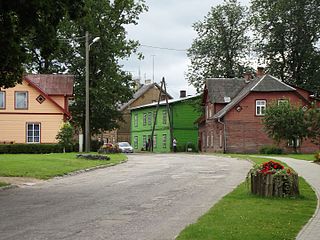
Staicele is a town in Latvia, and birthplace of Latvian conductor Jānis Zirnis.

Svēte parish is an administrative unit of Jelgava Municipality in the Semigallia region of Latvia.

Glūda parish is an administrative unit of Jelgava Municipality in the Semigallia region of Latvia. The administrative center is Nākotne. It was an administrative unit of the Jelgava District.
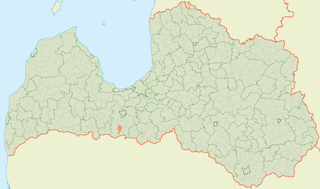
Lielplatone parish is an administrative unit of Jelgava Municipality in the Semigallia region of Latvia.

Sesava Parish is an administrative unit of Jelgava Municipality in the Semigallia region of Latvia.

Vircava Parish is an administrative unit of Jelgava Municipality in the Semigallia region of Latvia.

Zaļenieki Parish is an administrative unit in the western part of Jelgava Municipality in the Semigallia region of Latvia. It borders the Parishes of Glūda, Svēte, Lielplatone, Vilce, Tērvete, and Augstkalne. Rivers Auce, Dorupīte, Eglone, Svēte, and Tērvete flow through Zaļenieki.
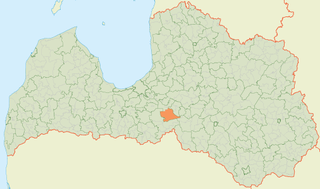
Birzgale Parish is an administrative territorial entity of the Ogre Municipality, Latvia. The entire parish is on the left bank of the Daugava, in the region of Semigallia. The parish borders with Tome Parish, Vecumnieki Municipality Vecumnieki Parish and Valle Parish, Jaunjelgava Municipality Jaunjelgava, its rural territory and Sērene Parish, along Daugava with Skrīveri Municipality, Lielvārde Municipality Lielvārde city, its rural territory and Jumprava Parish.
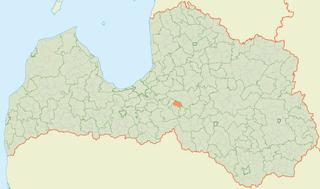
Lēdmane Parish is an administrative unit of Ogre Municipality in the Vidzeme region of Latvia.

Kauguri Parish is an administrative unit of Valmiera Municipality, Latvia.
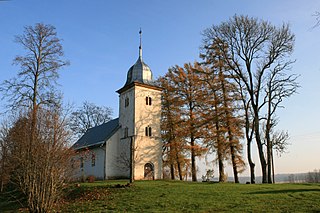
Vecpils Parish is an administrative unit of South Kurzeme Municipality, Latvia. The parish has a population of 529 and covers an area of 80.2 km2.
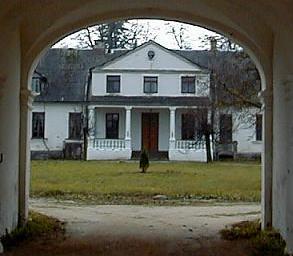
Blankenfelde Manor is a manor in Vilce Parish, Jelgava Municipality in the historical region of Zemgale, in Latvia. Built at the last quarter of the 17th century, it changed owners several times. The renovation work is currently being processed.

Jelgava Local Municipality is a municipality in Zemgale, Latvia. The municipality was formed in 2009 by merging Eleja parish, Glūda parish, Jaunsvirlauka parish, Lielplatone parish, Līvbērze parish, Platone parish, Sesava parish, Svēte parish, Valgunde parish, Vilce parish, Vircava parish, Zaļenieki parish and Kalnciems town with its countryside territory the administrative centre located in Jelgava city, which is not included in the territory of municipality. As of 2020, the population was 21,738.

Ķekava Municipality is a municipality in Latvia. The municipality was formed in 2009 by merging Baloži town, Daugmale Parish and Ķekava Parish, the administrative centre being Ķekava.






















